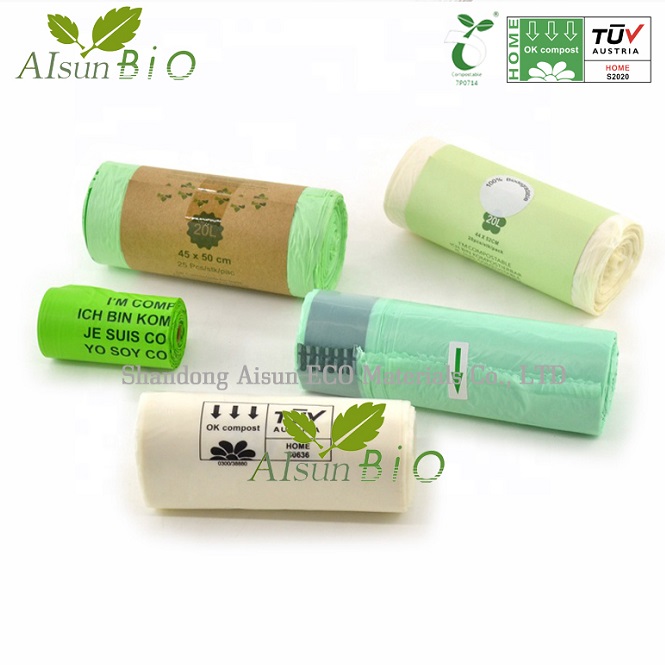With the intensification of “white pollution” pollution, countries around the world have launched a stricter plastic limit order, which can decompose plastic bags to occupy major supermarkets and shopping centers. Careful observation will find that these degradable plastic bags are almost all of them are almost all of these varieties. Pbat+PLA+ST. So what are the advantages of PBAT+PLA+ST?
One: starch
Starch is widely distributed in fruits or plant fruits, roots or leaves. There are up to hundreds of millions of tons of starch production every year. It is one of many renewable and biodegradable resources. It has the advantages of extensive sources and low prices. However, because natural starch has a microcrystalline structure and granular structure, it does not have thermoplastic processing performance, and it needs to be transformed into armoplastic starch to have thermoplastic processing performance.
Two: PBAT
Polycolic acid/phenyl -dysic acid dysol (PBAT) is a type of degradable polyester that has attracted much attention. And ductility can also be reduced to water and carbon dioxide in natural conditions.
However, the price of this material is high, which limits its application in the market; therefore, its low price and degradable starch is the best choice with PBAT.
Three: PLA
PLA (Polylactic Acid) is also known as polystumin. The production process of polystumin is pollution, and the product can biodegradable, which is realized in nature. Therefore, it is an ideal green polymer material. one.
However, there are many deficiencies in practical applications: PLA has poor toughness, lack of elasticity and flexibility, hard texture and brittleness, relatively low soluble strength, too slow crystalline rate, etc. The above defects limited their applications in many aspects.
PLA’s chemical structure contains a large amount of ester bonds, which causes poor hydrophilicity and degradation rates need to be controlled. In addition, the price of PLA is higher, which increases the cost of raw materials and limits its commercial promotion. Therefore, the PLA is modified for the above many shortcomings.
PBAT has a soft texture, strong ductility, and short degradation cycle; PLA has crispy texture, poor toughness, and long degradation cycle. Therefore, mixing the two is an excellent method of improving performance.
Four: PBAT/PLA material introduction
The melting of PBAT and PLA is a physical modification method. The main point is to require good compatibility. However, the solubility of PBAT and PLA is large, so compatibility is poor, and it is difficult to mix uniformly.
Improving the compatibility of PBAT and PLA is the primary problem. One or more containers need to be added to the mix of mixing to improve the adhesion of the PBAT and PLA interface. Commonly used containers are: plasticizers, reactivity, reaction, and tough polymer polymer.
PLA and PBAT have complementary performance, so there must be the best quality ratio of comprehensive performance.
1. The proportion of PLA rises to 40%to nodes. The stretching intensity of the material is reduced first and then increased.
2. If the PLA content is greater than 70%, the material is too crispy and cannot be blown into the film. Therefore, the proportion of PLA to PBAT should be maintained at about 1: 1 according to the condition of the additive.
【Degraded performance】
The initial response of the material degradation is that the hydrolyzed response of water molecules entering. If it is a separate PBAT material, it is difficult to degrade because the molecular structure has rigid ester bonds. The PLA molecules are susceptible to internal degradation by water. Therefore, the higher the PLA content, the faster the material degradation.

Post time: Sep-08-2022
